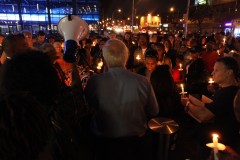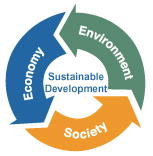Here at City Atlas, we’re opening a discussion that we’ll share with our readers on what counts as “sustainability.” Our goal is an accessible “user’s guide to sustainability for New York City.” We want to make it easier for you to have fun in the five boroughs in a way that fits into the future.
There is an array of choices available to New York’s many visitors and residents: to find and enjoy nature, if you choose; to make use of the vast culture at your disposal; to absorb the talent and ideas that flow through the city on a daily basis; to hear great music and eat good food. But since sustainability is our hook, what exactly do we mean by “sustainability”? Here our writer Megan McRobert launches our conversation with a critique of the recently opened Barclays Center.
Since the Brundtland Commission, convened by the United Nations, issued a report in 1987 called “Our Common Future,” their definition of sustainable development has come to frame many of these debates. The report defined sustainable development as “development that meets the needs of the present without compromising the ability of future generations to meet their own needs.” Today, sustainability is almost synonymous with “green” ways of living, but the Brundtland definition forces us to look beyond the environment. In order to meet today’s needs without compromising the future, we must imagine new modes of development and strengthen, not deplete, our social, natural, and economic resources. Academics often discuss sustainability as a “triad” of society, the environment, and the economy, or, people, planet, profit. Though the triad concept itself has been criticized, it helps us to conceptualize sustainability in terms of a resilient urban future that supports both current and future residents and communities, as well as our natural resources.

We recently published a piece on the opening of Brooklyn’s Barclays Center, highlighting the ways in which the new construction project uses green building technologies, including its use of an Ecometrics tracking system to monitor waste. While it is always exciting to see major development projects embrace environmentally friendly management tools, sustainability is about more than just LEED certification or limiting waste output.
What about the economic and social impact of the new Center? While the long-term impact remains to be seen, many community members came out to protest Barclays’ opening night, citing unfulfilled developer promises to provide affordable housing and jobs to the community. Spokespeople for the Center’s developer Forest City Ratner insist that these promises will be fulfilled one day, though these claims will continue to be met with skepticism until results are tangible. We hope that Barclays and future development projects will do more than just embrace the latest ecologically-oriented technologies and begin to make meaningful contributions to support and enhance the unique community and economic needs of New York City neighborhoods.
As we continue to face ever-growing economic and environmental uncertainty, let’s work together as a community to hold elected officials and developers accountable to the promises that they make. Though we may often disagree, vibrant community debate is necessary to ensure that the future of NYC is truly socially, environmentally, and economically sustainable.
Images: (top) HKSDF, (bottom) NY Observer
